Inclusión de niños con tea a través de la implementación de avances tecnológicos del siglo xxi
Inclusión de niños con tea a través de la implementación de avances tecnológicos del siglo xxi
Main Article Content
Abstract
For this research, a technological tool aimed at mobile devices (app) called DictaPicto was applied, focused on stimulating the visual part through didactic illustrations that serve as a support for the creation of concepts in individuals suffering from autistic effect disorder (asd) –who often have difficulties to understand verbal and non-verbal messages–. These types of tools are used to facilitate their adaptation to their environment and, therefore, their communication. The overall objective is to analyze the effects of the application on adolescents suffering from autism. DictaPicto offers benefits for daily communication in any situation for those who have this condition. It was concluded that using this app facilitated the reading of the context to encourage expression and participation in the classroom of students with asd. This type of strategy facilitates the interpersonal relationships of autistic adolescents in their social environments.
Keywords
Downloads
Article Details
References (SEE)
Álvarez, I. y Camacho, I. (2010). Bases genéticas del autismo. Acta Pediátrica de México, 31(1), 22-28. Recuperado de https://www.medigraphic.com/pdfs/actpedmex/apm-2010/ apm101g.pdf
Belinchón M, Rivière A. (1981). El lenguaje autista desde una perspectiva correlacional. Estu¬dios de Psicología, 5 y 6, 65-66. Recuperado de https://sid.usal.es/idocs/F8/ART11316/ lenguaje_autista_perspect_correlacional.pdf
Belso, J. y Bellver, A. (2017). Dictapicto. Aula abierta [recurso en línea]. Recuperado de http:// aulaabierta.arasaac.org/dictapicto-0-inicio
Fernández, L. (2015). Introducción de la tecnología como recurso para la enseñanza y el apren¬dizaje del alumnado con trastorno del espectro autista [trabajo de grado]. Universidad de Santiago de Compostela, España. Recuperado de https://minerva.usc.es/xmlui/bits tream/handle/10347/14553/TFG1415_Fern%C3%A1ndez_L%C3%B3pezValeiras_Lui-sa_P_X.pdf?sequence=4&isAllowed=yGoldsmith, T. y Le Blanc, L. (2004). Use of technology in Interventions for Children with Autism. Journal of Early and Intensive Behavior Intervention, 1(2), 166-178. Recuperado de http://dx. doi.org/10.1037/h0100287
Guzmán, G., Putrino, N., Martínez, F. y Quiroz, N. (2017). Nuevas tecnolo¬gías: puentes de comunicación en el trastorno del espectro autista (tea). Tera¬pia Psicológica, 35(3), 247-258. Recuperado de https://scielo.conicyt.cl/scielo. php?script=sci_abstract&pid=S0718-48082017000300247&lng=es&nrm=iso
Hernández-Sampieri, R. (2017). Fundamentos de investigación. Ciudad de México: McGraw Hill. Palomo, R. (2017). Autismo. Madrid: Alianza Editorial.









